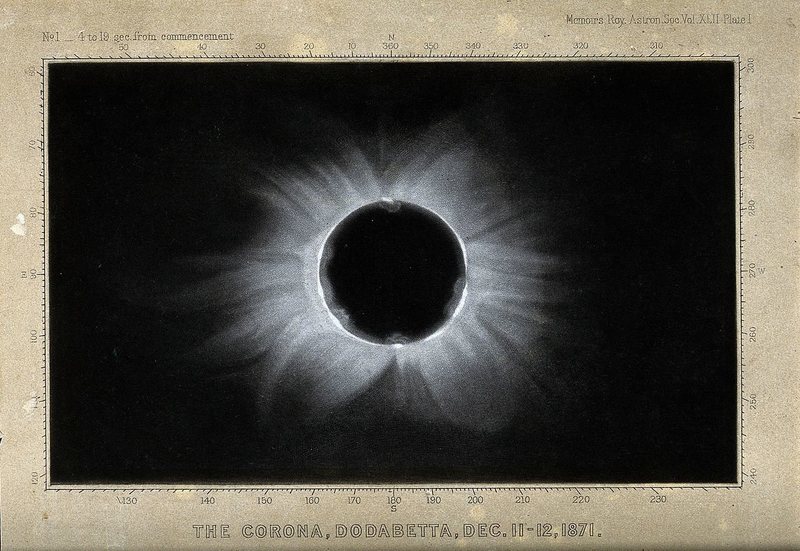How The Total Solar Eclipse May Affect You
On Aug. 21, 2017, for the first time in 99 years, a total solar eclipse will cross the US coast-to-coast. The shadow of the Moon will block the Sun, and daylight will disappear for around two minutes. Across the US, it will create a path of totality and those who live within this path will be able to see a total solar eclipse. Outside the path of totality, you will be able to view a partial solar eclipse.
The impact of the solar eclipse includes:
- Reduced solar energy supply, which will create a special peak demand in electric power
- Potential serious eye injuries from viewing the solar eclipse without recommended eclipse-certified dark glasses or filters
- Radio and cell transmission, GPS and other navigation systems disruptions from high-volume use

3 Things You Can Do To Stay Safe
- Reduce Your Energy Use
The sun has become an important source of electric power in the United States. During the eclipse, we will have a reduction in solar energy production, causing a higher demand on the grid for alternate power plant supply. Bloomberg estimated that solar energy production will be reduced as much as 9,000 megawatts. This could trigger a spike in power prices, and cause the shift of power source to extra power plants that rely on fossil fuels. You can help offset the drop in energy production by pre-cooling or automatically changing the temperature in your home by just a few degrees before the eclipse starts. Automated thermostat systems like Nest have rewards programs for reducing energy consumption at peak demand times, and the eclipse is a special event that will cause a shift in renewable energy supply, creating a special energy rush hour. Reducing your energy use during this peak demand time will help save money and reduce carbon emissions.
- Protect Your Eyes
The only safe way to look directly at the Sun or a partial or annular eclipse is through special eclipse-certified glasses ISO 12312-2. Standard sunglasses or DIY filters will NOT protect your eyes from the intensity of even the crescent sun. This exposure can cause permanent retinal damage, especially when viewed through binoculars or other optical aids.
Want to capture the moment? Here is what you can do: clean your phone lens, hold solar glasses in front of the phone lens, and snap a picture. Don’t look at the sun when shifting the glasses from your face to the camera. Do not try to take a photo with a high-end camera without proper solar filters, because the rays can damage your eyes. Keep your eyes safe by wearing the proper eyewear, and don’t miss this rare astronomical event.
- Be Ready for GPS or Cell Phone Malfunctioning
Crowds of eclipse-chasers will travel on August 21 trying to get the best chance of having clear skies for a better view. If you have planned a trip and are driving, print the map, and have alternative means of connection ready in case your cell phone ends up having reception or connectivity issues. Experts recommend using a 2-way radio, like a walkie-talkie, and texting to connect with your friends and family as more reliable means of communication. Leave home well in advance to make sure you won’t miss the event in case you get stuck in traffic. The cell phone or GPS malfunctioning is predicted as result of the huge increase in bandwidth usage. People will try to share photos, videos, or live stream the entire event on social media using their smartphones which may cause connection disruptions. Some service providers are boosting the bandwidth capacity by deploying a Cell-on-Wheels (COWs) and a Cell on a Light Truck (COLT) at several locations where most tourists will travel to get a better view of the eclipse. It is the same gear used by network disaster recovery teams after natural disasters.
For many people, the total solar eclipse could be a once-in-a-lifetime event. Enjoy the view, and stay safe! In case you miss this total solar eclipse, here is a Map of Total and Annular Solar Eclipses so you could prepare well in advance for the next one.

References:
Atlas Obscura: The Unique Science Experiments Planned for the Eclipse
Bloomberg: A Solar Eclipse Could Wipe Out 9,000 Megawatts of Power Supplies
Eclipse 2017: Eclipse 101
High Altitude Observatory: Eclipse Science Showcase
Eclipse Map: Total Solar Eclipse 2017
Museum of Applied Arts and Sciences: Einstein’s Theory of Relativity Proven in Australia, 1922
Nest.com: Solar Eclipse, Meet the Nest Thermostat
Xavier Jubier: Pictures of Total Solar Eclipses
Recent Posts
-
ANSI/ISEA 138 Safety Gloves: Ensuring Hand Protection
The human hand is an anatomical masterpiece and arguably the greatest tool attached to our bodies …Jun 25th 2024 -
June 2024: National Safety Month
June is recognized as National Safety Awareness Month and focuses to help "keep each other safe f …Jun 4th 2024 -
10 Ways to Prevent Wildfires
You can prevent wildfires by extinguishing flames before you leave the worksite. Avoid practicing …Jun 3rd 2024





